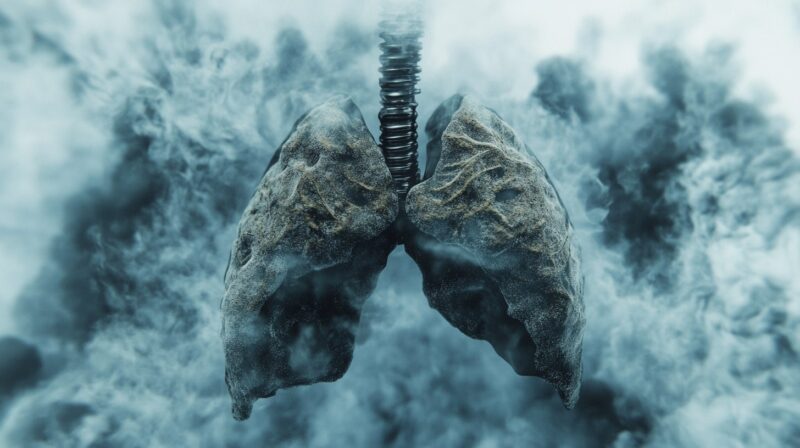Cancer is one of the most common deadly diseases in the world, and there are over 200 cancer types that can affect humans.
Fortunately, there are some cancers that may be avoidable if certain exposure risks are minimized. In this article, we’ll talk about a few common types of cancer that may be avoidable and how you can help to reduce your risk for them.
Lung Cancer
Lung cancer is a common and often deadly cancer that is classified as either small-cell lung cancer or non-small cell lung cancer.
In 2022, according to the American Cancer Society, it was estimated over 234,580 new cases were diagnosed in the USA in 2024. Lung cancer generally occurs due to exposure to certain triggers. These include:
Secondhand Smoke
Those working or being around secondhand smoke have a higher chance of developing lung cancer. Those who live with family members who smoke or work close to smoking areas may be more at risk.
To minimize the risk, you can encourage your loved ones to stop smoking or talk to your work to see if anything can be done about the designated smoking area.
Studies provided by the National Cancer Institute have shown that nonsmokers who are regularly around secondhand smoke increase their risk of lung cancer by 20-30%.
Cigarette and Tobacco Use

One of the most significant risks of developing lung cancer is through smoking cigarettes and tobacco.
Due to some of the carcinogenic chemicals involved in creating cigarettes, when smoked, they can damage your lungs over time. To lower the risk, it’s important to try to quit smoking as soon as possible.
Radon Exposure
Radon gas, a natural radioactive gas, sometimes found seeping from the ground ,can also increase your risk of developing lung cancer. Thankfully, you can get radon tests at home to find out whether there is a risk of exposure.
Tumors can be found via CT scans or X-rays, and if caught early, you have a higher chance of survival.
The U.S. Environmental Protection Agency (EPA) estimates that radon exposure is responsible for about 21,000 lung cancer deaths annually, with about 10% of these cases occurring in non-smokers.
Mesothelioma

According to Mesothelioma Hope, this type of cancer is an aggressive and rare type which is primarily associated with exposure to asbestos. This cancer generally affects the lining of the lungs, heart and abdomen.
The main cause of this cancer is ingesting or inhaling asbestos fibers, which were used years ago in the manufacturing and construction industries. These days some older buildings may have asbestos within the walls, but it’s important to understand it’s safe unless you cut into it.
To avoid the risk, it’s important to hire a professional company to properly dispose of the asbestos if you’re planning on renovating. You can also use protective masks so you don’t breathe it in or ingest any fine particles.
Due to the aggressiveness of the cancer, it’s important to seek medical help as soon as possible if you feel breathlessness or chest pain, especially if you know you’ve been exposed to asbestos in the past.
Skin Cancer
Skin cancer (especially melanoma) is very aggressive but is often preventable. In 2020, 325,000 new cases were diagnosed. During that time, 57,000 deaths also occurred as a result of melanoma. Some of the ways you can get it include:
Sun Exposure
Direct exposure to sunlight for long periods of time can damage the skin. Regular sunburns can also cause your risk of developing melanoma to be much higher. Ways to avoid this is to regulate how long you’re out in the sun for, wear protective clothing, and use sunscreen.
Tanning Beds
Tanning beds are another cause of developing skin cancer. Due to their design of emitting UV rays, these rays can damage the DNA of the skin cells, which may lead to mutations.
These mutations form into cancerous cells. Ways to avoid this from occurring is to reduce your time in tanning beds or avoid them completely.
Studies by the Skin Cancer Foundation show that UV radiation causes DNA mutations in skin cells, leading to uncontrolled cell growth and tumor formation. This cumulative damage over time raises the risk of skin cancers, including melanoma, squamous cell carcinoma, and basal cell carcinoma.
If you see changes in your skin, it’s best to get it checked by a professional to rule out skin cancer.
Liver Cancer
Liver cancer is an aggressive disease that can have a high fatality rate. There are two primary risk factors for getting liver cancer. These can include:
Chronic Hepatitis Infections
According to MD Anderson Cancer Center, Hepatitis B and C viruses can lead to chronic long-term liver inflammation and damage, which can increase the risk of you developing liver cancer.
Those who have issues with Hep B and C may need to be monitored by professionals more often to ensure they pick up any cancer early if it starts to grow.
Mayo Clinic study explains that to help lower your risk of developing liver cancer, you can get vaccinated against Hep B. It’s also recommended to avoid having unprotected sex with multiple sexual partners.
Excessive Alcohol Consumption
As per Drinkaware, heavy drinking can cause cirrhosis of the liver, which can increase your chance of getting liver cancer. To help reduce the risk, you could try to avoid drinking alcohol or drink it in moderation.
If you have been exposed to any of the above, it’s important to have regular screening to make sure you don’t miss any signs that liver cancer is forming.
Cervical Cancer
Cervical cancer is another aggressive cancer that can take the lives of many women. Cervical cancer is related to the HPV virus, which causes the mutation of cervical cells to grow.
Studies provided by BMC Genomics show that cervical cancer is strongly linked to persistent infection with high-risk strains of the Human Papillomavirus (HPV), particularly types 16 and 18, which are responsible for the majority of cases. HPV can integrate its DNA into the host’s genome, leading to mutations in key regulatory genes.
- Get vaccinated against HPV. There are vaccines available that help to lower the risk of you getting the HPV virus. They also help to lower your risk of developing cancer.
- Wearing protection when having sex is also important especially if you’re having sex with multiple partners. The HPV virus can be transmitted sexually.
- Get regular pap smears to detect when cells change. Once every one to two years is a good starting point to maintain and monitor your cervical health.
Cervical cancer can be avoided, and the risk factors can be minimized by taking these extra precautions.
Endnote
Cancer is common across the world, while some cancers don’t have a cause, others can be avoided. By understanding your risk factors you have the ability to reduce your risk of directly being diagnosed with some cancer types.
If you have been diagnosed with cancer, make sure you seek medical and psychological help if needed to ensure you have the best outlook in the future.
Related Posts:
- 10 Factors Affecting Job Market Trends In Healthcare…
- Sleep Apnea 101 - Symptoms, Causes, and Risk Factors
- Top 5 Pregnancy Signs Before Missed Period
- Top 6 Money-Saving Tips on Prescription Medications…
- Top 10 Online PhD in Nursing Programs: 2024 Reviews
- Top 13 Healthcare Jobs That Don’t Know You Need Experience















